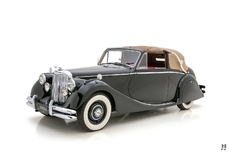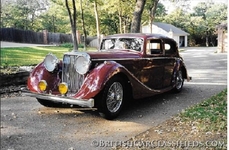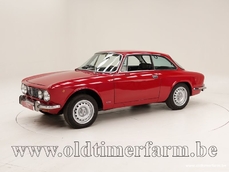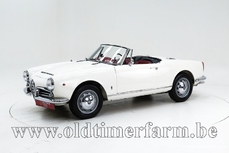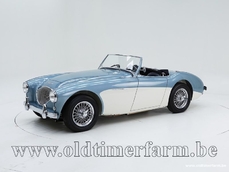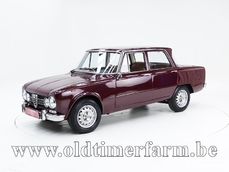Jaguar MkV 3.5 DHC '49 1949
General description :
Only 714 DHC’s have been made of which only 577 had the 3.5 litres engine and left-steered First Jaguar equipped with hydraulic brakes, first Jaguar that came both left- and right-steered Comes with maintenance bills of tens of thousands of euros Delivered in New York Comes with the original emergency toolbox The Jaguar MK V is an evolution of the SS Jaguar series that entered the market during the interwar period. The MK V - short for Mark Five - was built meticulously over a period of only three years. This short production run does not mean that the MK V was not ground-breaking; on the contrary, ingenuity and inventiveness are the characteristics that define this car. Jaguar's ability to maintain its stately and classic image while thinking innovatively and progressively cannot be emphasized enough. It's a trademark that the Mark Five exemplified. The MK V is a classic eye-catcher, available as an open coupé or a regular saloon, it was the first Jaguar ever to feature independent front wheel suspension, hydraulic brakes, indicators, and it was the first Jaguar that was sold with both left-hand and right-hand drive, which boosted its sales. Under the hood, two straight-six engines reside, with capacities of 2.7 litres or 3.5 litres, making power outputs of 102 hp or 125 hp and emitting a delightful growl that is unmistakably true to Jaguar. These relatively powerful engines are operated by a 4-speed manual gearbox, and shifting gears is a breeze that never stops to bring immense pleasure. The interior reinforces the captivating nostalgic feel of the postwar fifties, adorned with classic leather and wood tones. On the exterior, there is the sleek design with the Jaguar emblem proudly standing on top of the long hood, underneath which the engine identity is indicated: '3 ½ litre' or '2 ½ litre'. The convertible version features so-called 'landau bars' that not only serve a functional purpose for the soft-top but also add the finishing touch to the overall look. This car is a delight, and collectors are enamoured with it. Its name, 'Mark Five', caused some confusion since there had not been a Mark One, Two, Three, or Four ever released before. 'Mark Five' was said to refer to the number of prototypes. It was only with the fifth prototype for this car that Jaguar's design team gave the green light for the production of this handsome, and that fifth prototype lent its name to eternity. The MK V was produced in parallel with the highly sporty Jaguar XK 120 of which only half as many models were built, which demonstrates the sales figures of the MK V. In 1951, the MK V was succeeded by the MK VII since Bentley had already claimed 'MK VI'. The MK V is an adored vintage car: it is highly functional, spacious, exceptionally solid, and it pushes the boundaries of aesthetic perfection. Technical information: Body work Length (cm): 476 (187 inch) Width (cm): 177 (70 inch) Height (cm): 159 (63 inch) Wheelbase (cm): 305 (120 inch) Weight (kg): 1767 (3896 lbs) Mechanics Engine: straight-six 3485 cc front-engine Valve gear: 12 Fuel system: 2 SU carburettors Gear box: 4-speed manual Transmission: RWD Left-steered power: 120 hp (89 kW) at 4500 t/m torque: 244 Nm at 2300 t/m Top speed: 146 km/h (91 mph)
1949 Jaguar MkV 3.5 DHC '49 is listed for sale on ClassicDigest in Aalter by Oldtimerfarm for €112500.
Car Facts
Car type : Car Make : Jaguar Model : MkV Model Version : 3.5 DHC '49 Engine size : 0.0 Model Year : 1949 Location : Aalter Vehicle Registration : Undefined
112500 €
People who viewed this Jaguar MkV also viewed similar Jaguar listed at ClassicDigest
Other cars listed for sale by this dealer
About Jaguar
Ah, the story of Jaguar, from its early days as the SS Cars Ltd. to its pinnacle with the D-type, and the street-going evolution in the form of the iconic E-type. There's something quintessentially British about this tale, and I'll narrate it as a British journalist might.In the Beginnings:
Our journey into the world of Jaguar begins in the 1930s, when a company known as SS Cars Ltd. emerged. Despite the unfortunate coincidence of their initials with the rising political tensions in Europe, they started producing stylish and performance-oriented cars. The SS 100, introduced in 1936, was a symbol of elegance and speed, setting the stage for what would become Jaguar.
The Birth of Jaguar:
As the shadows of World War II loomed, SS Cars Ltd. wisely decided to disassociate themselves from the SS initials. Thus, in 1945, they officially became Jaguar Cars Ltd., a name that would soon be synonymous with British luxury and performance.
The XK Series:
Jaguar's post-war era brought us the XK 120, a true sensation in 1948. With its sleek design and a powerful 3.4-liter inline-six engine, it became the world's fastest production car. The XK 120 was the blueprint for what lay ahead – Jaguars that blended style with speed in a uniquely British fashion.
The D-type Dominance:
Then came the D-type, a true racing legend. Introduced in 1954, it won Le Mans three times in the 1950s, showcasing Jaguar's engineering prowess. With its innovative monocoque construction and the iconic fin at the back, the D-type was the apex of Jaguar's motorsport success.
The E-type Emergence:
But the true turning point arrived in 1961 with the introduction of the E-type, often described by Enzo Ferrari as "the most beautiful car ever made." Its long bonnet, curvaceous body, and a 3.8-liter engine delivering exhilarating performance made it an instant classic. The E-type was not just a car; it was a work of art on wheels, and it could hit 150 mph on the road.
Street and Racing Success:
The E-type's beauty was matched by its capability on the track. The lightweight E-types were particularly successful in various racing events, cementing Jaguar's reputation as a force to be reckoned with in motorsport.
The Age of Refinement:
As we delve deeper into the Jaguar story, we find that the 1950s and 1960s were an age of refinement and expansion. Alongside the magnificent D-type and the E-type's iconic emergence, Jaguar introduced models that further solidified its reputation for luxury and performance.
The MK2:
In the late 1950s, Jaguar unveiled the MK2, a sports sedan that combined elegance with power. This sleek four-door saloon was a favorite of bank robbers and law enforcement alike, thanks to its exceptional speed and handling. The MK2 was a symbol of Jaguar's ability to blend sophistication with performance and had a successful racing career as well.
The XJ6:
Fast forward to 1968, and Jaguar launched a car that would define luxury saloons for decades to come – the XJ6. It was a masterpiece of engineering and design, featuring a smooth inline-six engine, independent rear suspension, and a spacious, beautifully appointed interior. The XJ6 was a symbol of British elegance and provided a ride so smooth that it seemed to glide over the road. It became the flagship model for Jaguar and set the standard for luxury saloons, showcasing a level of refinement that left competitors in awe.
The Blend of Classic and Modern:
While the MK2 and XJ6 represented the evolution of Jaguar's saloon cars, they maintained the brand's commitment to performance and luxury. These cars didn't just belong on the racetrack; they were equally at home cruising down the grand boulevards or gliding through the English countryside.
The Challenges of Change:
However, as the 1970s arrived, Jaguar, like many British automakers, faced financial challenges and changes in ownership. The British Leyland era brought both opportunities and struggles, as the brand navigated through various mergers and transitions.
Nevertheless, the legacy of the MK2 and XJ6, along with the D-type and E-type, continues to define Jaguar as a manufacturer that combines timeless elegance with a spirit of performance. These classic models, whether driven on winding roads or parked as collectors' treasures, serve as a testament to Jaguar's enduring presence in the world of automotive excellence.
The Jaguar story, from its early days as SS Cars Ltd. to the creation of automotive icons like the E-type, MK2, and XJ6, is a journey that reflects the very essence of British motoring – a blend of luxury, power, and style that continues to captivate enthusiasts and connoisseurs alike.


















